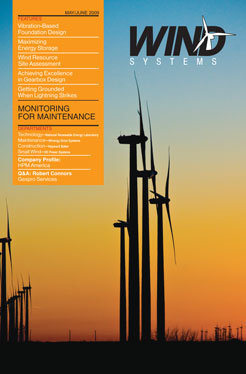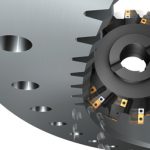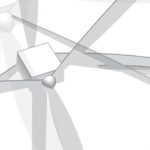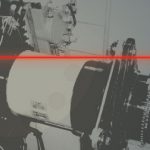Business is booming at Moventas, a leading tier-one supplier of gearboxes for wind turbines. Company sales increased 40 percent last year, reflecting tremendous growth of this alternative resource in the face of sky-high energy prices. According to the World Wind Energy Association, global installed wind turbine capacity has grown tenfold in the last 10 years and has increased 25 percent just in the past year. Predictions from the association indicate that the 74 gigawatts of current worldwide wind-powered electrical generation will more than double by 2010, when levels are expected to reach 160 gigawatts.
To meet this growing demand, more wind turbines—and ever-larger units—are needed quickly. Speeding up development is a daunting task, however, given the increasing complexity of the designs and the need for machines to operate reliably for decades in adverse weather conditions. These issues all come down to considerably more tests to be performed on each of the custom-designed units. Jari Toikkanen, manager of the Research and Test Group at Moventas, has seen the number of noise and vibration tests quadruple in the last five years, with many projects requiring same-day turnaround. Figure 1
“In addition to greater product development efforts for these units, wind turbine OEMs are demanding more vibration tests that measure behavior in greater detail than ever before,” says Toikkanen. “Tests are done primarily to improve product reliability and meet strict demands from regulatory agencies such as the AGMA (American Gear Manufacturers Association) and European ISO standards.”
Studying Gearbox Resonances
He notes that particular attention is focused on studying vibrations of the wind turbine’s massive gearbox, which uses a combination of planetary and helical gearing to step up rotor speed 100-fold for driving the electrical generator. Another major component of interest is the torque arm connecting the gearbox to the turbine framework. For large three-megawatt rated models made by Moventas, the gearbox weighs around 30 tons and measures two meters in diameter and two-and-a-half meters in length. The torque arm is four meters wide from bushing to bushing, a half meter thick, and weighs another five tons.
Engineers perform extensive modal impact testing to ensure that resonances of these components do not match the excitation frequencies of the surrounding structure or gear mesh frequencies, thus exciting potentially damaging vibrations in the framework, rotor blades, drive shafts, and the huge tower, the tallest of which is over 120 meters. Generally, the goal is to avoid the modal frequency range of 80 to 250 Hz for the torque arm and 400 to 800 Hz in the rest of the housing structure. When resonances are identified within or near these ranges, engineers shift the modal frequencies by modifying the geometry of the gearbox components and torque arm, typically optimizing stiffness properties by changing part thicknesses and shapes. Figure 2
Toikkanen notes that the process is complicated by the variable gearing frequencies that excite gearbox and torque arm vibration modes at different rotor blade speeds, from an input rotation of a few rpm for a light breeze to a maximum of 10 times that for gale-force winds. Further, Moventas is also performing additional tests and studies of torsional vibration beyond the scope of their current resources.
Boosting Test Productivity
The former test solution at Moventas presented challenges in completing work in a timely manner. Test equipment was awkward to move between test rigs, test setups were typically lengthy ordeals, and engineers had to spend time on multiple test runs because only two channels were available for modal analysis. Also, measurement data had to be post-processed before results could be viewed, thus requiring tests to be completely re-run if sensors were not properly connected, for example, or if more detailed study was needed to troubleshoot unexpected problems.
These limitations were overcome when Moventas implemented the LMS Test.Lab software with an LMS SCADAS Mobile data-acquisition system that has eight channels, enough to take all modal analysis measurements in a short time. The system contains an integrated suite of tools Moventas engineers need for modal analysis—test set-up, control, measurement, signal conditioning, result analysis, data management, and report generation—all in a lightweight, portable laptop-size unit.
“We can easily carry the unit between test rigs at our facility, and if necessary our engineers can go at a customer or end-user site very quickly to provide support or troubleshooting,” says Toikkanen. “Also, the system is extremely convenient to set up. Built-in workbooks and prompts show us step-by-step where to enter parameters and how to proceed through the process. Templates even fill in values we’ve used in the past that aren’t likely to change. Geometry models showing the placement of accelerometers on the gearbox housing are especially useful and easy to configure. From start to finish, setups with LMS Test.Lab are very fast and easy, so we’re ready to take measurements in a few minutes rather than several hours.” Figure 3
Another capability of LMS Test.Lab that greatly improves testing productivity is online monitoring. “We can see results immediately as measurements are being taken instead of waiting hours for post-processing,” says Toikkanen. “With real-time visualization we can verify the test on the spot, see firsthand how the structure deforms with every hammer impact, and readily identify the root cause of any unexpected resonances.” Figure 4
Visualization is particularly helpful to Moventas engineers with the animated mode shapes displayed together on the same screen with plots such as frequency response functions (FRFs) showing vibration amplitude versus frequency at key locations on the gearbox. This enables engineers to see immediately how the gearbox housing bends and twists at various frequencies so they can readily identify which bearings are transmitting vibrations and determine critical gear-mesh harmonics.
When testing is done, report generation features allow Moventas engineers to efficiently create the necessary documentation, complete with LMS Active Pictures that show live test data, including mode shape animations, in Microsoft Word documents as well as PowerPoint presentations. “LMS Test.Lab report generation with Active Pictures lets us quickly create reports that clearly show our designers, customers and regulatory agencies the modal behavior of the gearbox,” says Toikkanen.
“With its mobility, test setup, online monitoring, visualization, and report-generation capabilities, LMS Test.Lab boosts our test productivity immensely,” he adds. “Now we can complete routine tests in a few days instead of weeks. When faster turnaround is needed, our team can run an entire battery of modal tests in the morning and have results analyzed and documented that afternoon.”
Fast-Response Engineering Projects
In addition to implementing LMS Test.Lab, the company has worked closely with LMS Engineering Services on projects requiring additional calculation resources; projects where fast response was needed to meet requirements for key wind-turbine manufacturer customers. Defining the scope and specifications of durability analysis calculations for these projects was coordinated in conjunction with Petri Lahtinen, chief structural analyst at Moventas. Figure 5
In one such project, LMS Engineering Services was called upon to provide critical fatigue life analysis needed by Moventas and a wind turbine manufacturer for certifying a wind turbine. The study was to verify that two critical wind-turbine gearbox cylindrical components—a torque arm and gear planet carrier—would withstand expected loads over a 20-year operational lifetime. LMS engineers created finite element models of the components and applied unit load cases to determine the stress-time series on each part. This stress-time series together with the complete load time histories for the components were then used with LMS Virtual.Lab durability simulation software to determine fatigue life prediction for the base material. Results were provided within two weeks from the start of the project, thus enabling Moventas to give a fast response in verifying that cumulative damage values were well within the safety factor of the designs.
In a project for another wind-turbine manufacturer, Moventas contracted LMS Engineering Services to measure gearbox rotational vibration on the low-speed input and high-speed output shafts. Signals from accelerometers mounted directly on the low-speed shaft were fed into LMS Test.Lab for analysis. Signals for the high-speed shaft were obtained from a laser vibrometer system measuring rotational velocity. A series of operating response color maps accurately identified rotational vibration and related resonances for both shafts. In less than one week Moventas was provided valuable data needed by the wind turbine manufacturer in simulating the dynamic performance of the entire drivetrain. (Figure 6a & Figure 6b)
“The collaboration with LMS Engineering Services demonstrates that LMS goes far beyond selling hardware and software,” says Toikkanen. “Their industry-wide expertise in performing this work and fast response in providing exactly the right data made us look good in the eyes of our customers and made a lasting impression that has immeasurable business value for us.”








































